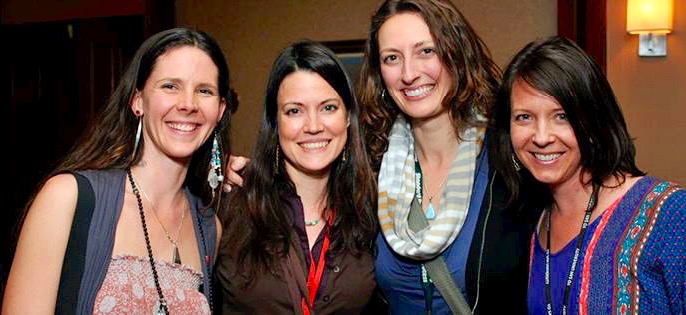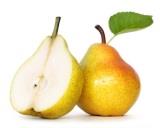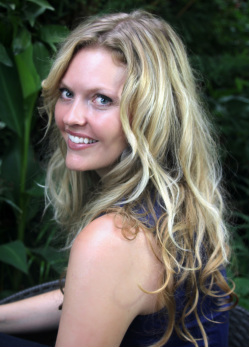
I'm both anxious and excited. It's like going back to summer camp—I'm not sure if my friends from last year will be there, if the camp counselors will be nice, if the lunch lady will be serving mystery meat. I've been out of acupuncture school for less than a year, and while part of me is still trying to recover and adjust to working, another part of me is beginning to stir again—the student inside. It seems that in our profession, despite all different backgrounds, educations, specialties and interests, we have that in common. We love to learn!
Acupuncture and Oriental Medicine are a lifelong study. The more I learn, the more I realize how much I have yet to learn. I've had to remind myself that it will take time and I have a good solid base to build on. The beauty of this reality is that we will just keep getting better—that's the plan at least. It can be incredibly easy to find a pattern, a groove, a needle combo that does the trick. Why mess with it if it works? What I found was the Southwest Symposium in Austin, TX was more than just a way to get continuing education units, it was a way to get excited about the medicine again, to collaborate with like and different minds, to see old friends and meet face-to-face with people, who up until now, had been a tiny picture on Facebook.
So I dusted off my notebook, gathered some pens and checked my expectations at the door. I was thrilled to see familiar faces and meet people I'd only know by name and reputation. What an incredible experience to be in this space that is buzzing with the collective qi of students and practitioners. In private practice I find that we can become a bit isolated. The graduate school environment is so unique—bouncing ideas off of one another, learning from each other's successes and mistakes. Then, for many, we go into practice either alone or with people of different disciplines and the collaboration shifts, for it is mainly our own successes and failures we learn from and online social networking we lean on.
Vendors lined the exhibition hall of the Symposium – wall to wall with herbs, needles and gadgets galore. People would break off into little groups, catching up with old friends and making new connections. There was a lot of talk about the need to invest in our medicine, and come together to help protect our scope of practice, safety issues with unregulated needling practices and how to get involved. And this was all outside of the lectures!
There is something so reaffirming and supportive about hearing groups of people chatting about harmonizing the Ying and Wei over coffee and mixed nuts. Or knowing exactly what someone is saying when they say they felt that the esoteric Heart Shaoyin pattern changed their practice. Where else could you say, “I really love this herbal decoction for phlegm misting the mind, it really opens the orifices” without vacant, slightly horrified stares. We're not always on the same page, but we're at least using the same book.
The speakers of course were fantastic and covered a broad range of topics and modalities. You could really choose your area of interest—needling, herbs, qi gong, tuina or some combination. So much to choose from, esoteric, Japanese or Nei Jing style for your needling curiosity, with epigenetics, hormesis and aging, with some facial diagnosis in between. Regulating cycles, treating pregnancy and pediatric tuina if that suited your practice's focus. If phlegm gets you stuck, there was an herbal course for that. There was even a way to get those ethics CEUs covered.
So while it's very convenient to sit in front of our computers and get those needed CEUs, I'm starting a personal practice of attending the Southwest Symposium as a way to stay connected. Connected to my community, to my medicine, to my inner student.
2015 Southwest Symposium speakers (in alphabetical order):
- Paul Anderson, ND,
- Jason Blalack, MS, LAc
- Mary Bove, ND, AHG
- Lillian Bridges
- Jeffrey Dann, PhD, LAc
- John Finnell, ND, MPH, LAc
- Holly Guzman, LAc
- Peter D. Lichtenstein, D.C., LAc
- Edward Neal, MD
- Stanley Reiser, MD, MPA, PhD
- Mikio Sankey, PhD, LAc
- Constance Scharff, PhD
- David Twicken, DOM, LAc
- Qianzhi ("Jamie") Wu, PhD, LAc
- Janet Zand, OMD, LAc
About Lauren St. Pierre, MAcOM, L.Ac.
A graduate of AOMA Graduate School of Integrative Medicine, Lauren is in solo private practice with Earthspring Acupuncture, PLLC as well as Texas Center for Reproductive Acupuncture. She is also working with AOMA as a Graduate Teaching Assistant in both clinical and didactic courses while continuing to work with The American Cancer Society. Lauren has lived in Austin since 2006 by way of Lake Tahoe, California. She counts Austin as her home with her husband and two Boston terriers.







-resized-600.jpg?width=160&height=211&name=acupuncture_(8)-resized-600.jpg)

 Lauren has lived in Austin since 2006 by way of Lake Tahoe, California. While pursuing her MAcOM at AOMA she continues to work with The American Cancer Society as a cancer information specialist. She counts ATX as her home with her husband and two Boston terriers. http://www.earthspringacupuncture.com/
Lauren has lived in Austin since 2006 by way of Lake Tahoe, California. While pursuing her MAcOM at AOMA she continues to work with The American Cancer Society as a cancer information specialist. She counts ATX as her home with her husband and two Boston terriers. http://www.earthspringacupuncture.com/